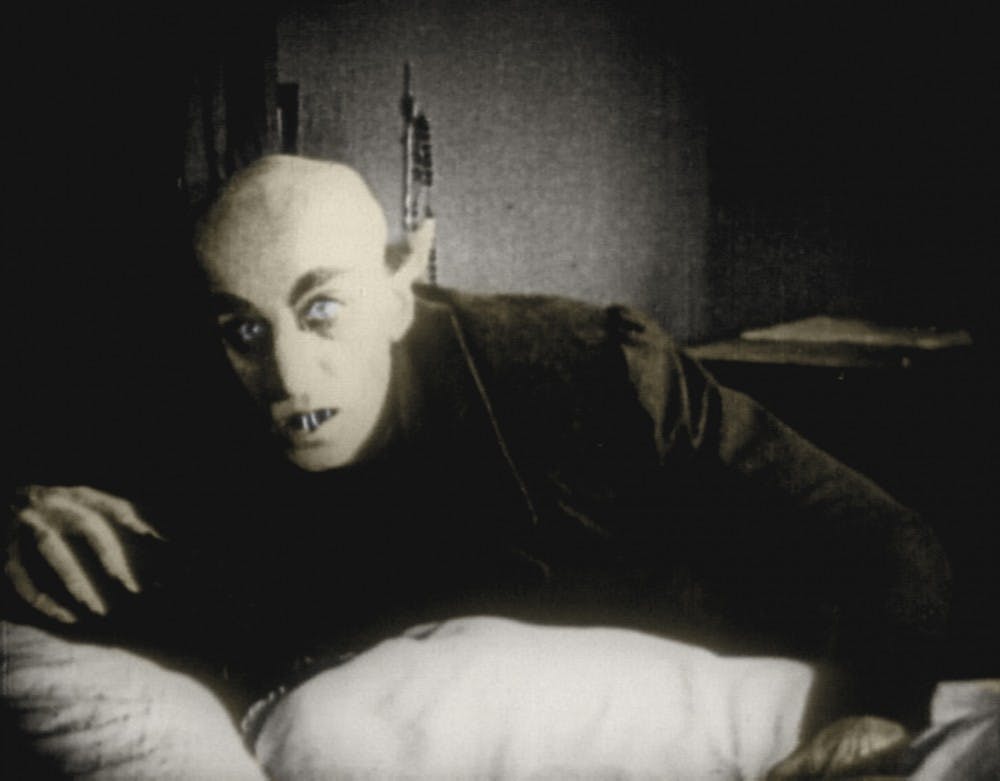Two popular black and white movies come to Blu-ray.
Two landmark silent films came out on Blu-ray Tuesday. Kino released F.W. Murnau’s “Nosferatu” (1922), and the Criterion Collection released Charlie Chaplin’s “City Lights” (1931).
Nosferatu is one of the earliest feature-length horror films and one of the first vampire films ever made. The film follows the basic plot of Bram Stoker’s novel “Dracula” (so closely, in fact, that his family sued).
A young German man, Thomas Hutter (Gustav von Wangenheim), is sent to an old mansion up in the Carpathian Mountains to do business with the reclusive Count Orlok (Max Schreck).
He soon discovers that Orlok is a vampire. His wife, Ellen (Greta Schröder), is put at risk of becoming Orlok’s next victim.
While the film may not scare modern audience who are used to explicit violence, jump scares and fast editing, the 91-year-old film is still creepy and chilling. Murnau used set design, the contrast of light and darkness, shadows, camera movement and placement to produce his haunting nightmare. Max Schreck as Orlok — with his bald, emaciated, skull-like head, pointed nose and ears and arched eyebrows — is truly repulsive and frightening.
This film, along with “The Cabinet of Dr. Caligari” (1920), laid the foundation for the horror genre. It contains some of the most striking and memorable images the screen has ever seen, with Orlok rising upright from his coffin and the finale, where his shadow creeps up the side of a wall.
“City Lights,” written, directed, produced and starring Charlie Chaplin, is without a doubt my absolute favorite film.
In 2007, the American Film Institute listed the film as the 11th greatest film of all time and, in 2008, listed it as the greatest romantic comedy of all time. In this film, the signature Little Tramp character is a homeless man bumbling through the bustling modern city.
The film was made when almost every film was a “talkie,” and silent cinema was already a thing of the past. Chaplin was determined to make his film with only a musical score and sound effects. He made the film the way he wanted to, and it became a huge financial success.
He even toys with the audience’s expectations by having the film open with a monument unveiling where people are giving “speeches” but only gibberish kazoo noises come out of their mouths.
In one scene, when the cover is pulled off a statue, the Little Tramp is sleeping on the figure’s lap. Woken up by the commotion, he politely tips his hat at the crowd and tries to scuttle away, but his baggy, torn pants get caught on the statue’s sword. Suddenly the National Anthem starts playing, and the Little Tramp tries to stand upright but keeps losing his balance because of his caught pants.
This scene is a perfect example of why Chaplin’s Little Tramp character is so funny. He is trying to maintain his dignity during the embarrassing ordeal, but he is constantly failing. The Little Tramp is not trying to be funny and does not view himself as a clown. His struggles and tribulations make the character’s situation funny.
The Little Tramp falls in love with a blind flower girl (Virginia Cherrill) who, through a misunderstanding, thinks he is a rich man. He also befriends a millionaire (Harry Myers) who is chummy when he is drunk and gives him wads of money but does not even recognize him sober.
The film is full of hilarious slapstick routines, including a boxing match and the millionaire’s failed suicide attempt.
The reason it is Chaplin’s best film is because of its mixture of humor and poignancy. The relationship between the Little Tramp and the blind flower girl is beautiful and moving relationship beyond description.
The ending is the greatest scene in film history. There has never been a more perfect conclusion to a film ever. It is one of the only films that makes me cry, and it restores my faith in humanity every time I see it — at least for a few hours.
Chaplin made a handful of masterpieces, but his greatest achievement as a filmmaker is “City Lights.”

